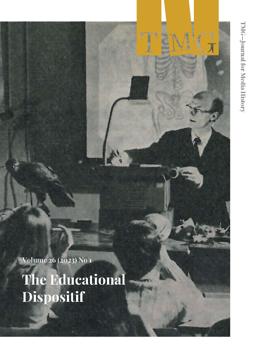2023-06-05
Through Ice and Snow. Mountain Films as Educational Films in the 1920s and 1930s
Publication
Publication
TMG Journal for Media History , Volume 26 - Issue 1 p. 1- 27
The article focuses on two cinematic representations of alpinism and its multimedia performance practice in the popular education programmes of the Vienna Urania in the 1920s and 30s: First on Arnold Fanck’s early mountain film Im Kampf mit dem Berge (DE 1921). I am not concentrating on Fanck’s film version, but on the version produced by the Urania for popular education, which was distributed throughout Austria as Urania-Kulturfilm. I ask how the Urania utilised Im Kampf mit dem Berge as part of a media package (consisting of films, lectures and slides) and which media-pedagogical methods and practices were thereby employed. How did entertainment and instruction relate to each other? The second film I will look at is the ambitious Austrian amateur film Mit Steigeisen und Eispickel (c. 1934) produced and filmed by a group of mountaineers. I investigate how this film relates an established repertoire of images to elements of educational films to introduce the audience to new techniques of ice climbing: What techniques of showing and instructing are discernible and to what extent are the film and its performance practice ‘educational’? To sum it up, I interpret the mountain and alpine film as educational film and investigate the role and qualities attributed to the medium film as a teaching tool for conveying and disseminating contemporary ideas of the mountain and alpinism.
| Additional Metadata | |
|---|---|
| , , , , , | |
| Sound & Vision | |
| doi.org/10.18146/tmg.838 | |
| TMG Journal for Media History | |
| creativecommons.org/licenses/by-sa/4.0 | |
|
Yazdanpanah, Marie-Noëlle. (2023). Through Ice and Snow. Mountain Films as Educational Films in the 1920s and 1930s. TMG Journal for Media History, 26(1), 1–27. doi:10.18146/tmg.838 |
|

